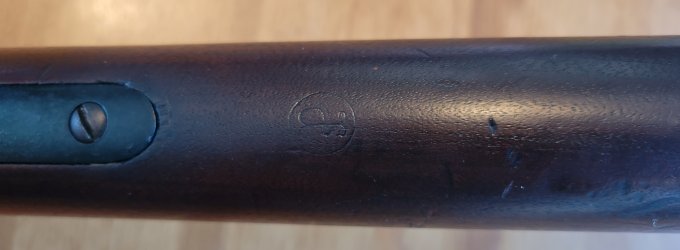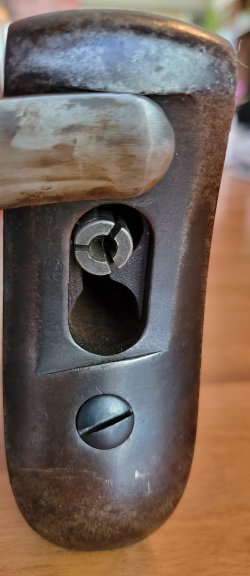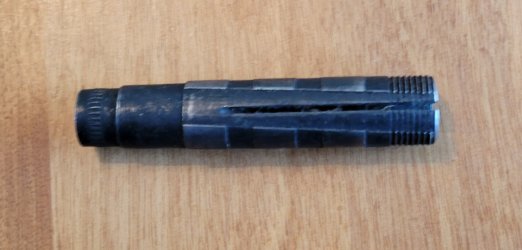So in the past year I've been busy buying milsurps I've wanted for decades. Finally I'm close to completing my cartridge fed US martial arms collection after picking up this beauty.
This is my Model 1888 Springfield Trapdoor Rifle. Made in 1892 it's among the last of the breed. The Krag our first bolt action used by the US Army was adopted in 1892 so this rifle was old news at the time it was manufactured. The M1888 is known for its Ramrod Bayonet which was ridiculously ineffective. These rifles were used extensively by militia and national guard units in the Spanish American war as only regular Army units were issued Krags. Teddy Roosevelt referred to this bayonet system as an abomination when he first saw it in action. Not being ones to learn from their mistakes the department of the army actually applied the ramrod bayonet concept to the 1903 Springfield for the first couple of years of its production.
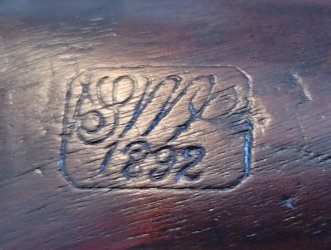
This rifle has an outstanding bore and is in very good overall condition. It was missing some small parts and also had a couple of incorrect ones as well. I've acquired what was missing and swapped out most of what was non-matching but not all yet. Working with 19th century firearms IS an expensive endeavor. Everything to make it work properly is in place, what is still incorrect will have to stay for a while and has no affect on function.


I've shot it several times, first using the previous owners handloads and then using my own. I would say the first range trip was more a just to see what it does situation and I was left a little under impressed. Knowing the condition of the rifle especially at the muzzle I knew it should shoot better.
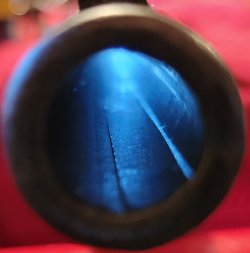
It was shooting ridiculously high so obviously a front sight change was necessary. I was using too much Kentucky windage to know what it was really capable of. Once that front sight change was accomplished it became apparent that the rear sight was drifting on its own. Set the sight first shot is on then the next 2 walk off to the right. Once it settles where it wants to be it holds. At this point the rifle has proven its accuracy with the groups it currently gives.
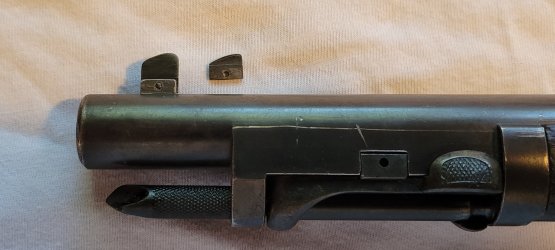
The next step will be load development of the 45-70 rounds. I'm currently working with H4198 and IMR 3031 smokeless powders but plan on developing black powder substitute rounds as well. Eventually I will also load some old fashioned black powder rounds. Nothing beats the big white clouds and deep boom of real black powder.
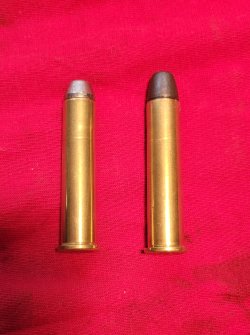
Here are pictures of the most recent groups. They're all to the right because of the sight drift but they are tight because of how it shoots! The first picture is with 405gr rounds and the second is with 300gr rounds. The 300's are tighter and the 405's shot higher. I'm going to work on the rear sight and hopefully get it to hold in place. Updates will come as work progresses.

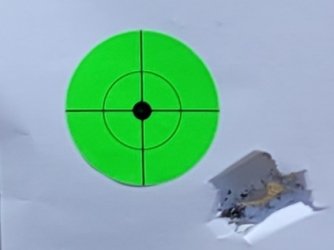
This is my Model 1888 Springfield Trapdoor Rifle. Made in 1892 it's among the last of the breed. The Krag our first bolt action used by the US Army was adopted in 1892 so this rifle was old news at the time it was manufactured. The M1888 is known for its Ramrod Bayonet which was ridiculously ineffective. These rifles were used extensively by militia and national guard units in the Spanish American war as only regular Army units were issued Krags. Teddy Roosevelt referred to this bayonet system as an abomination when he first saw it in action. Not being ones to learn from their mistakes the department of the army actually applied the ramrod bayonet concept to the 1903 Springfield for the first couple of years of its production.

This rifle has an outstanding bore and is in very good overall condition. It was missing some small parts and also had a couple of incorrect ones as well. I've acquired what was missing and swapped out most of what was non-matching but not all yet. Working with 19th century firearms IS an expensive endeavor. Everything to make it work properly is in place, what is still incorrect will have to stay for a while and has no affect on function.


I've shot it several times, first using the previous owners handloads and then using my own. I would say the first range trip was more a just to see what it does situation and I was left a little under impressed. Knowing the condition of the rifle especially at the muzzle I knew it should shoot better.

It was shooting ridiculously high so obviously a front sight change was necessary. I was using too much Kentucky windage to know what it was really capable of. Once that front sight change was accomplished it became apparent that the rear sight was drifting on its own. Set the sight first shot is on then the next 2 walk off to the right. Once it settles where it wants to be it holds. At this point the rifle has proven its accuracy with the groups it currently gives.

The next step will be load development of the 45-70 rounds. I'm currently working with H4198 and IMR 3031 smokeless powders but plan on developing black powder substitute rounds as well. Eventually I will also load some old fashioned black powder rounds. Nothing beats the big white clouds and deep boom of real black powder.

Here are pictures of the most recent groups. They're all to the right because of the sight drift but they are tight because of how it shoots! The first picture is with 405gr rounds and the second is with 300gr rounds. The 300's are tighter and the 405's shot higher. I'm going to work on the rear sight and hopefully get it to hold in place. Updates will come as work progresses.


Attachments
Last edited:








